Advertisement
Understanding Soccer Positions: A Full Breakdown and Explanation
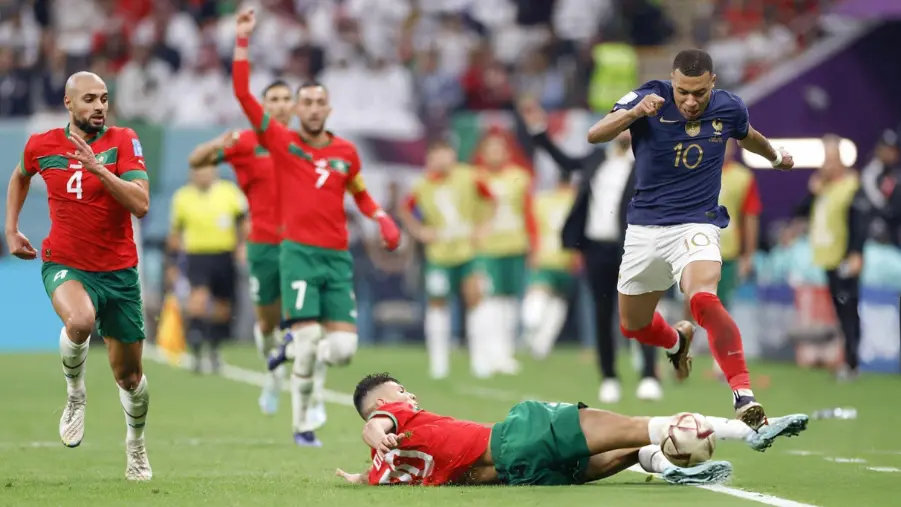
Summary
As we all are fully aware of the extended popularity of soccer, it is a widely followed and watched sport — with over 5 billion fans all across the globe. In recent times, the game of soccer has significantly evolved with the usage of advanced tactics and formations. Managers, Head coaches, players, tacticians, and team tactical analysts are coming up with new ways to have an edge in the game.
Whereas, a few elite soccer managers have managed to excel in the process of trying out variations of the technical side of the game in the modern game in terms of tactics and formation. So to make it a bit easier to understand the importance of formational shape, here’s the list of the top most popular and widely used soccer formations. Within the realm of tactics and formations, there’s another key factor that is quite essential to play the sport and it’s the most fundamental component of the game — which is a player’s playing position.
Notably, players need to have a deep knowledge of Soccer formations in order to settle nicely into any team’s way of playing style and have a better understanding of their role within the formation on the pitch. This article will examine and outline all the different types of positions in soccer extensively, which are used in modern soccer.
How Many Positions are there in Soccer?
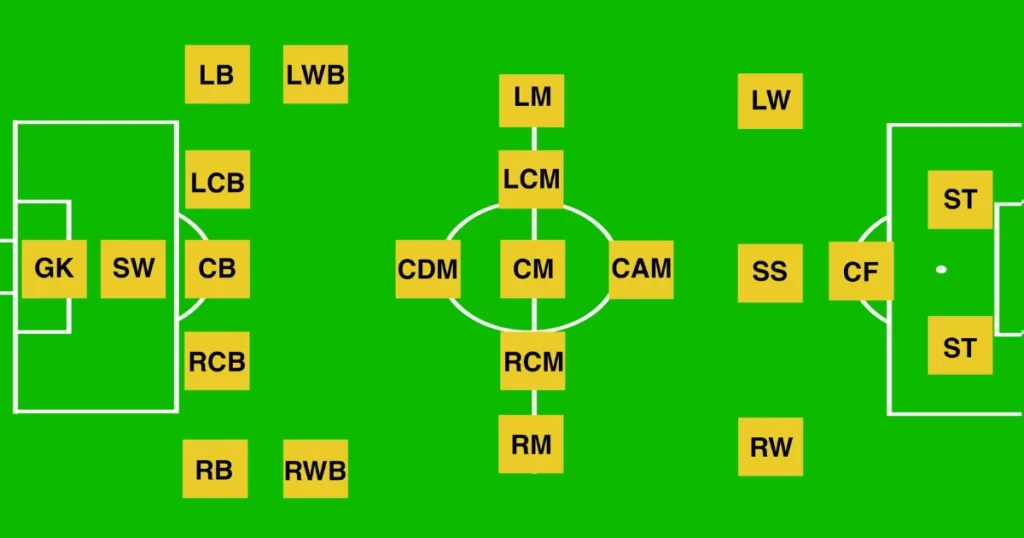
Basically, there are four main areas on the soccer pitch that the players deployed in while playing the game; Goalkeeper, Defence, Midfield and Attack. In any team, there are 11 players tasked with different roles and responsibilities in their particular position. The position of players can vary depending on the type of formation a team is operating, for instance in a 4-3-3 soccer formation shape which is the most common and preferred choice for the coaches, the following is the list of positions.
- Goalkeeper
- Left-back
- Left Centre-back
- Right Centre-back
- Right-back
- Defensive midfielder
- Central-Midfielder
- Central-Midfielder
- Left winger
- Centre-forward
- Right Winger
Explaining All Types of Soccer Positions?
Now, moving onto the explanation part of every position in soccer and its variation and dynamic roles. Each position is required to cover specific areas on the pitch. We will be elaborating on the roles and responsibilities of each player and also touching on aspects of key skills that are essential to have while playing in those specific positions. Starting from the last man in defense to forward upfront we’ll cover everything.
Advertisement
Goalkeeper
The first and foremost soccer position in any team is the goalkeeper also known as the ‘shot-stopper’ who stands in between the sticks to guard the goalpost. The keeper’s position is surely the most unique and equally important — with the advantage of using their hands to make saves, collect the ball and punch it away during set-pieces and ball distributions. They are the last man in defence and constantly communicate with fellow teammates and back line to maintain their position and formational shape.
The goalkeeper’s job is to guard their goal against the opposition’s attacker and keep a clean sheet for the team, as they might be the most underrated players in any team despite playing a pivotal role.
Key Skills
–Shot-stopping: the primary feature of any goalkeeper is shot-stopping — blocking the shot from the opposition to safeguard their goal through their quick reflexes and agility to judge the intensity of the shot from close ranges, crosses, deflected to long-range shots and low-driven shots or in 1 vs 1 situation during penalty kick.
-Footwork: there’s been a rise in demand for keepers with excellent footwork skills since the possession-based game is in trend. It helps teams build from the back, keeping the possession and distributing without losing the ball under pressure. Also kicking the ball with accuracy and power during goal kick.
–Ball Handling: another crucial aspect of the keeper’s game is catching and ball handling, they should be solid with their catching skills and handling the ball in any situation within the box, from crosses to set pieces or close-range shots.
–Communication: communication and leadership skills have also become a key part of any shot-stopper’s routine. They are required to read the game from behind and instruct their outfield players to maintain their tactical formation and close down any gaps between the lines of defence, thus they should be vocal and commanding.
–Aerial Ability: typically the number one’s are taller which gives them the advantage to jump high and claim the ball. Also, they must be confident in the air to make quick judgments and to commit top-corner saves, block high shots and punch away in set pieces.
Notable Players
Lev Yashin, Peter Schmeichel, Petr Čech, Oliver Kahn, Iker Casillas, Gianluigi Buffon, and Manuel Neuer.
Advertisement
Advertisement
Defensive Positions
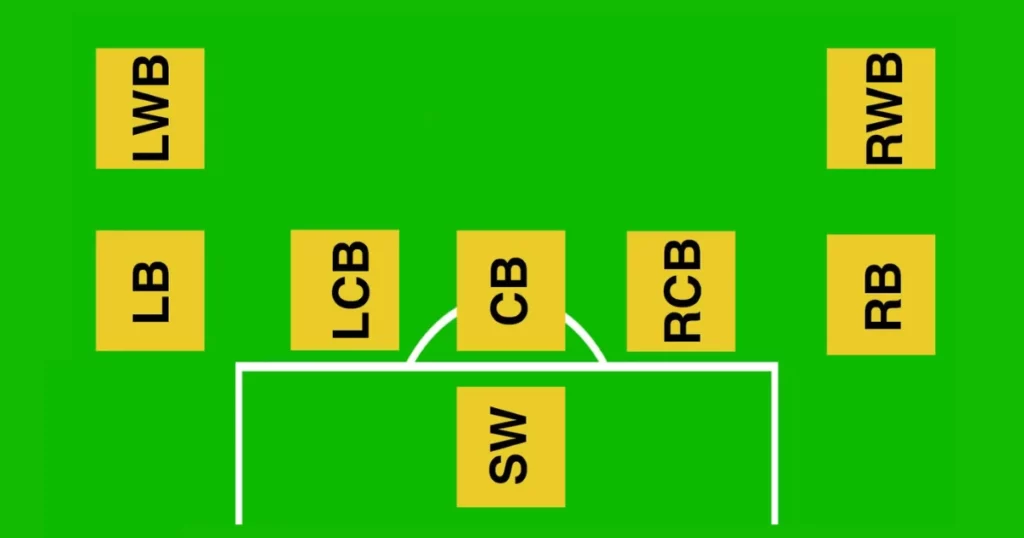
Centre-back
The Centre-back is the main pillar of defence in the soccer position, as their duty is to halt the opposition’s attack from getting to the goal before causing trouble for the keeper and organizing the back line. The central defenders make challenges to win the ball in the defensive zone and progress them to advanced areas to initiate the build-ups and attacks, or even distribute and switch sides in possession.
The centre-backs are also tasked with covering wide zones and linking up with full-backs to make successive ball progression and keep possession during high-intensive presses from the attackers.
Advertisement
Key Skills
–Positioning: A top-quality centre-back must possess sublime game intelligence to read the opponent’s game to position themselves in the right place to intercept the passes block shots and make tackles. Additionally, they arrange the back-line to catch the attackers in offside traps.
-Tackling: It is the core ability of any centre-back making tackles to revert possession or clear any danger with the challenge. However, the timing of the tackle should be well-timed to reduce the chances of fouling the player in the process.
–Passing: nowadays, it has become very crucial for centre-backs to be superb with their passing skills, as most of the team uses their defenders to build from the back. They should have an exquisite range of passing and confidence over holding the ball and distributing it wide playing vertical passes, and attempting precise long balls.
–Aerial Ability: being good in the air is a necessity for centre-backs to win headers and long balls, dealing with crosses. It is crucial while defending set pieces and corners. In offence, it can cause the opposition during set-pieces and corners — with chances of heading the ball into the net.
–Physical Strength: the central defenders need to mark their opponents prompting them to engage in physical battles. they have to shield the opponents to protect the ball or win the one-on-one situation with their physical strength and absorb the rough challenges and contact to remain injury-free.
Notable Players
Franz Beckenbauer, Sergio Ramos, Paolo Maldini, Alessandro Nesta, Virgil van Dijk, Fabio Cannavaro and Carlos Puyol.
Full-Back
Full-backs are the most pivotal part of modern soccer, full-backs typically refer to two types of soccer positions; left back and right back. Another advanced variation of full-back is called wing-back who tends to stay higher on the field and inclined towards attacking responsibility — usually operating in three-man defence.
They are defenders who are positioned on either side of the flanks in defence in back-four systems such as 4-4-2, 4-3-3 or 4-2-3-1, with the primary task of defending, however, they are generally expected to go upward to provide support in attack and make overlapping runs down the wide channels create goal-scoring chances through crosses, link-ups and long balls inside the opposition box.
Advertisement
Key Skills
Speed: speed is a basic criterion for any full-back to mark the pacy wingers on flanks, and track-back in defence during the counterattacks. They tend to make overlapping runs to quickly transition counter opportunities by exploiting the spaces on wide spaces through their speed and agility.
-Stamina: both left and right backs must have a high work rate due to their role of covering a lot of ground in the match. Constantly moving from defence to attack and then returning can be a tiring process. Thus, maintaining stamina throughout the 90’ mins of play becomes vital.
–Versatile: Generally the full-backs are versatile and dynamic in nature, as they are tasked with multiple roles of defending and attacking as well. Switch the play from defence to attack quickly. At times, swapping positions with wide midfielders and wingers, they should also adopt various positions during the game.
–Defensive skill: After all, the full-backs are defenders with the ability to attack and move upward, so defensive skills are an important aspect. Being able to make well-timed tackles and interceptions makes them a vital part of any team’s defensive structure.
–Positional Awareness: they should have good positional awareness, to anticipate the move of oppositions or wingers during the one vs one. When they get caught out of possession, their absence in defence will create a void in the backline, therefore, full-backs must be aware of their position and surroundings.
Notable Players
Roberto Carlos, Cafu, Philipp Lahm, Ashley Cole, Marcelo, Javier Zanetti and Dani Alves.
Variations of the Full-Back
Wing Backs
Wing back role is more attack-oriented deployed mostly in the formations with three central defenders such as 3-5-2, 3-4-3 or 5-3-2. Unlike the traditional full-back who has a balanced role in both defence and attack. Wing-backs often stay in advanced areas acting as wingers and providing width while consistently being involved in attacks. However, they still need to drop down to defend — when out of possession.
Advertisement
Midfielder
In the middle of the pitch, there comes the role of midfielders — who bridge the gap between defence and attack. There are various types of midfielders with different roles and purposes such as Central defensive midfielders (CDM) Central midfielders (CM), Central attacking midfielders (CAM) and Wide midfielders (Wingers). Midfielders are considered the engine of any team — a quality midfield can make or break the play thus their roles an pivotal in soccer positions.
Key Skills
–Passing: the most vital skill of a midfielder is passing and the range of passing all across the field. They need to be able to make precise and accurate long and short passes, without giving the ball away, their style of play and understanding controls the flow of the team and the timing of attacks or ball progression.
–Vision: the ability to anticipate the movements of teammates and opposition and find the spaces in between the compact situations to deliver through balls. Midfielders often spread the play wide on flanks sensing the gaps with their excellent vision to scan the surroundings and switch the play.
–Dribbling: alongwith vision and passing having dribbling skills enables a midfielder, to control the ball in tight spaces and carry it through the spaces with progressive dribbles and beating the markers skipping past ahead into attacking positions.
–Work Rate: midfielders are responsible for connecting the defence to attack which means they have to cover grounds and revolve all around the central zones (box-to-box midfielder’s role). While equally helping in defending, stopping counter-attacks, and pressing in addition to building attacking, and making late runs — thus they must have a high level of cardiovascular fitness for a high work rate.
–Set-piece: In general midfielders are quality on set-pieces such as corners, short or long free-kicks and crossing with their precise delivery to find the net or teammates to create goal-scoring opportunities in set-pieces.
Notable Players
Zinedine Zidane, Luka Modric, Toni Kroos, Andreas Iniesta, Andrea Pirlo, Steven Gerrad, Patrick Vieira and Frank Lampard.
Advertisement
Variations of Midfielders
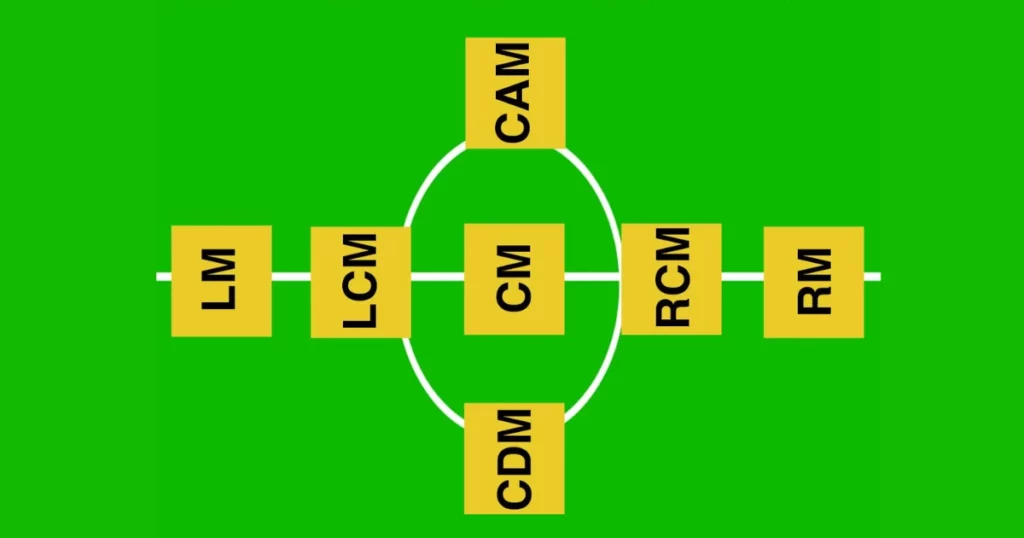
Attacking midfielders
As its name suggests, attacking midfielders are ones with a more advanced role of creative playmaking, who are responsible for creating chances for forwards and assisting attackers, making late supporting runs into the box, and often scoring goals and delivering through balls players like Ricardo Kaka, David Silva, Kevin De Bruyne falls under this category.
Box-to-box midfielders
The box-to-box midfielders are a combination of defensive and attacking play, the name box-to-box says that they are expected to cover both the 18-yard box in the entire outing. They break the opposition’s play and also create chances for their side by moving forward into advanced positions. Midfielders like Stevan Gerrad, Frank Lampard, and Yaya Touré are classic examples.
Defensive midfielder
Defensive midfielders are also known as the ‘pivot’ or ‘holding midfielders’, they sit deep in the midfield and protect the back-line as shields and primarily function to break the opposition’s play, such as Casemiro, Lothar Matthaus, Claude Makélélé, and Rodri. Another variation from within the defensive midfield is deep-lying playmakers — who generally sit deep in the same position and orchestrate the play by distributing the ball with long balls the likes of Xabi Alonso and Andrea Pirlo are prime examples of deep-lying playmakers.
Wide Midfielders
Next, we move on to, Wide midfielders or wingers — who typically play alongside the touchlines in quite wide roles providing depth to the team’s midfield set-up stretching it wide opening spaces in the middle. Meanwhile, wingers are positioned in an advanced position on flanks up against the full-backs of the opposition, which helps maintain possession and brings fluidity to the game.
They initiate the attacking play from the wide area by dribbling, carrying the ball and beating the opposition to move closer to the 18-yard box or nearby area to deliver crosses, playing a one-two with forward, cutting back, creating opportunities and sometimes taking shots from the edge of the box.
Advertisement
Key Skills
–Technical ability: wide midfielders are technically gifted players with strong ball control and dribbling past the defenders. They need to effectively control the ball and must be quick to create play, delivering pinpoint crosses in the box.
-Speed: similar to full backs and wing backs, speed is the key requirement for wingers and wide midfielders, as their role involves tracking back and going up regularly, making bursting runs on flanks.
–Dribbling: In a winger’s game dribbling is a necessity, they often find themselves in closed space surrounded by defenders and even in empty flanks, to edge past defenders making space to take shots hence ability to carry them forward with dribbling is a must for any winger.
-Shooting: wingers often get scoring chances, making runs and cutting inside to find a void in defence in the opposition’s box to shoot the ball accurately past the keeper. Finishing and precision in shots are determinate skills of wide midfielders.
-Stamina: A wide midfielder’s job can be tough as they are constantly running up and downsides making explosive runs, beating defenders and dribbling into tight spaces — stamina should be high to accomplish all these tasks efficiently.
Notable Players
Ryan Giggs, David Beckham, Johan Cruyff, Thiery Henry, Neymar Jr, Pavel Nedved and Cristiano Ronaldo ( Manchester United from 2003-2008).
Advertisement
Attacking Positions
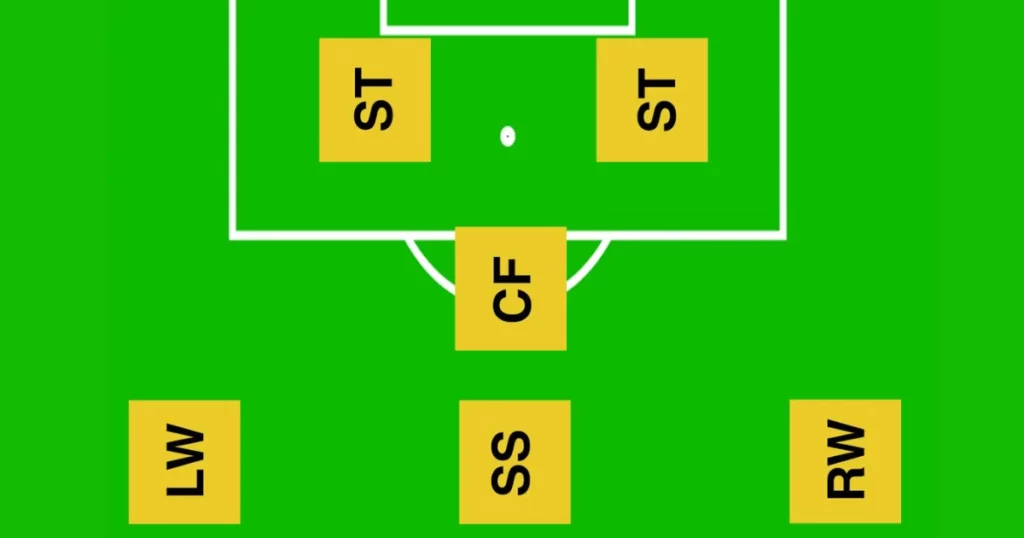
Forward
Attackers and forwards are the ones who lead the team’s front line and ultimately their contribution – goals are what subsequently decide the winner in a soccer match. The Centre-forward is positioned in front of the opposition’s goalpost to produce threats for the opponents. In the forward category, there are various roles such as Centre-forward, Striker, Second-striker, false-number 9, target man and wide forwards — as all of them have distinct roles.
Apart from scoring goals, forwards also play a huge part in creating chances by dragging defenders resulting in space for fellow teammates. However, the role and responsibility of the Centre-forward in any team depends on their way of play.
Strikers
A striker is similar to a centre forward except that he is a little more mobile with a little more pace. They love to exploit defensive gaps and go around the back of the opposition’s backline. Clinical finishers are good strikers, who know how to put chances past goalkeepers. Often their success in breaking down defenses is dependent on their movement and instinct.
Second Strikers
Second strikers are supporting role to the main center forward or striker. They run between the opposition’s midfield and defence, between play and linking and chances for teammates. Versatile second strikers are those who can score goals and play creative playmaking. They tend to drop deep to receive the ball, which will draw the defenders out of the position, leaving so many more spaces for others.
Inverted Wingers
Modern soccer has a tactical innovation: inverted wingers. Unlike the traditional winger who plays on the natural side of the field in question (right-footed players playing on the right wing, for example), inverted wingers play on the other side of the field. It allows them to cut inside, and when they are stronger on their feet it allows them to find themselves making goal-scoring opportunities. Let’s say a right-footed player on the right wing can drive inwards to take a shot or play a pass into the middle. This makes the attack more unpredictable, and more direct attempts at the goal. Inverted wingers also provide overload to overloaded central areas that attack midfielders and strikers would together destabilize defenses.
Key Skills
–Hold-up play: It is an important skill, especially in forwards who play as Tagret man or out-and-out striker — involves receiving the ball in tight spaces and shielding it
-Shooting ability: Centre-forward must be adequate in finishing chances and shooting to put goals on the scorecard. Scoring goals through — headers, tap-ins, low shots, volleys, and top-bins to get the ball past the keeper.
–Composure: during hold-up play and movements in tight spaces a striker should be composed in taking his goal-scoring chances. Especially with ball controls and combination play with their teammates inside the box.
–Aerial ability: Generally, the target man or the number 9 of the team is tasked with the duty of winning headers and ball during set-pieces and corners. Physicality and strong presence in the air help in winning aerial duels.
-Technical skill: A striker has to be technically sound with their one-on-one ability, passing, finishing and ball control. In addition, tactical awareness and excellent decision-making instincts are necessary to operate in crowded zones or tight spaces.
Notable Players
Lionel Messi, Cristiano Ronaldo, Pele, Ronaldo Nazário, Karim Benzema, Luis Suarez, Kylian Mbappe and Robert Lewandowski.
Soccer Position Abbreviations
| Abbreviation | Full Position Name |
| GK | Goalkeeper |
| DF | Defender |
| CB | Centre-Back |
| LCB | Left Centre-Back |
| RCB | Right Centre-Back |
| LB | Left-Back |
| RB | Right-Back |
| LWB | Left Wing-Back |
| RWB | Right Wing-Back |
| DM | Defensive Midfielder |
| CDM | Central Defensive Midfielder |
| CM | Centre Midfielder |
| AM | Attacking Midfielder |
| CAM | Central Attacking Midfielder |
| LM | Left Midfielder |
| RM | Right midfielder |
| LW | Left Winger |
| RW | Right Winger |
| SS | Second Striker |
| ST | Striker |
| CF | Center Forward |
Advertisement
Frequently Asked Questions
Q. What’s the role of a wide midfielder in soccer?+
Q. What is the number 10 position in soccer?+
Q. What position does number 6 occupy in soccer?+
Q. What is the duty of a wing-back position in soccer?+
Conversation
(0 Comments)
Editor's Pick

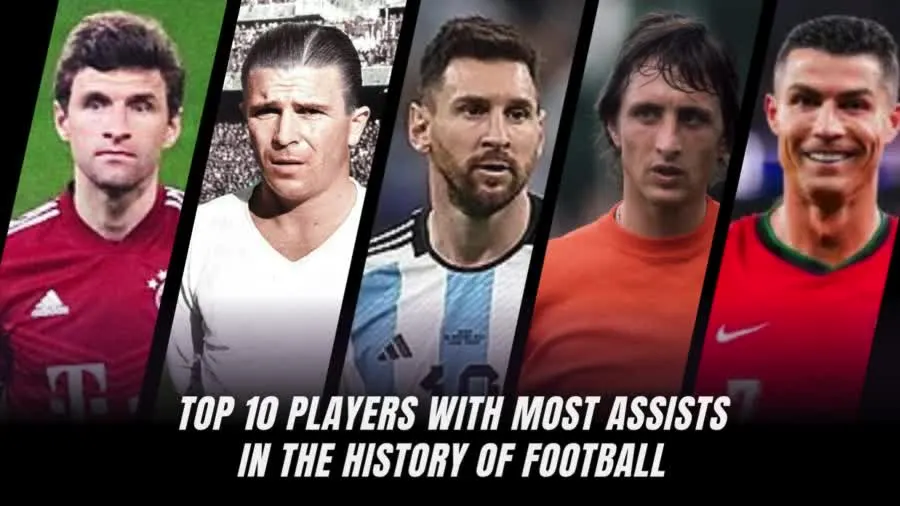
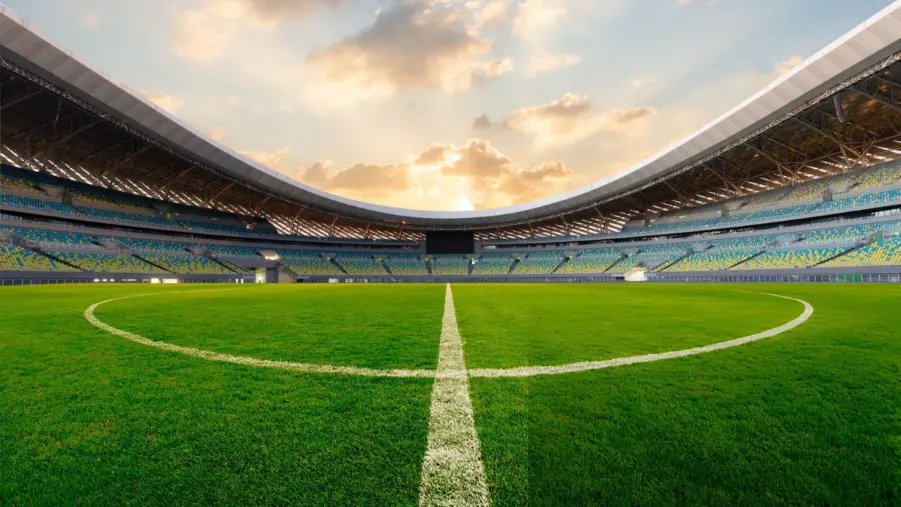


-1763199236104.webp)
-1763555140371.webp)

-1763532484258.webp)
-1755617053181.webp)
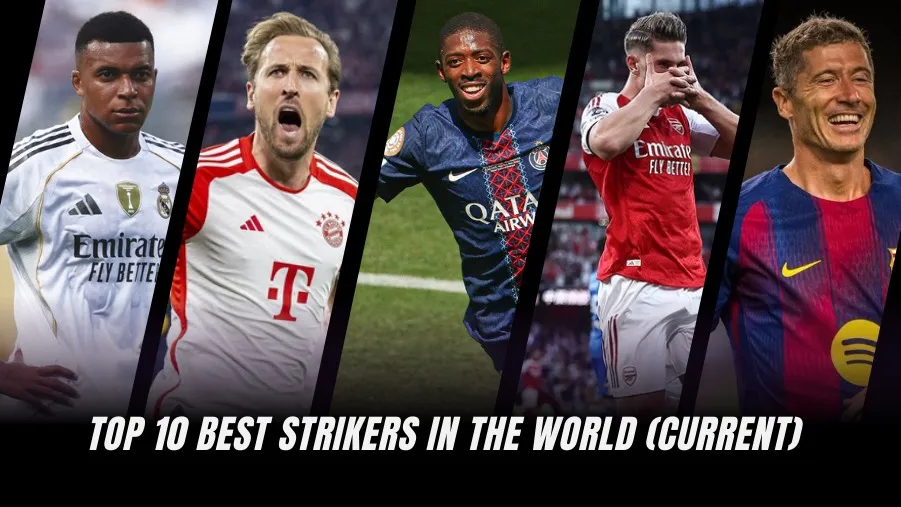
-1751212789599.webp)